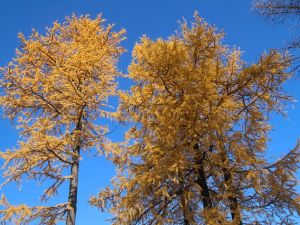
An intruder among evergreens
November, the month of the dead, is characterized by trees without leaves, short days and cloudy skies. Only evergreens keep their needles year round, leaving us with a green and grey landscape. But, as to every rule, there is an exception, the tamarack, also called the American larch.
This evergreen, found almost everywhere in Canada, has pale green needles in summer which turn golden yellow in the fall. The tamarack does not require a specific environment and grows in almost every type of soil, which is why it is one of the first trees to colonize peat-bog and wetlands. Tamarack often grows alongside the black and white spruce, the balsam fir and the trembling aspen.
But why does the tamarack lose its needles every fall? It is in fact an adaptation to cold weather. As spring comes, the weather gets warmer, but the soil is still frozen, which means that the trees perspire and cannot access water in the soil. As an adaptation, evergreens have a waxy coating on the needles, preventing perspiration. Tamaracks do not have that waxy coating so, in order to avoid winter desiccating, they lose their needles, just as deciduous trees do.
So get out, and enjoy the last fall colors before winter comes.
Author: Stéphanie Bentz, biologist in charge of education
